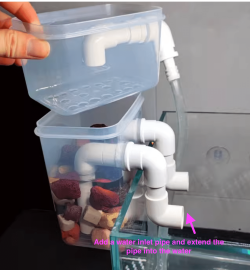At my peak I had 28 Aquaclear hang-ons. I have all the sizes. They are a versatile durable filter which works great. I cannot see spenfing a penny for thos attachments and do not believe they will add any value to the filter. I am working my way out of the hobby so today I have only 18 and will be closing more tanks shortly. My oldest longest running Aquaclear is a 200gph (50). It was out into service in 20002 and has run every since. I do not recall having to buy another AC in well over 10 years now.
One of the reasons I like the ACs is they have flow control. So it is easy to use a filter size that is bigger than needed and simply turn down the flow. What you get is way more space for media without having to worry about too much flow.
If it ain't broke, don't fix it.
Now as to the good bacteria. Let's try some common sense. Your have run your tank for 8 months w/o a filter. So clearly one of two situations must exists. First, your tank never produces any ammonia- i.e the fish do not breath or poop and you never feed them. You have no organic waste of any kind being created and your tap water has no potential issues.
Second, nature is still working normally and the bacteria have colonized your tank and are protecting your fish from ammonia and nitrite.
So, if your fish are alive and healthy, Second prevails. If your fish are all dead, you never feed them etc. then First prevails.
Which do you think is the case?

Also, there is no scientific evidence that adding a filter to a tank can kill the bacterial. In fact the opposite is likely true. Some of the bacteria will end up in the filter because it is a good place for them to get what they need delivered to them regularly. Of course there will be an equal decrease in the amount of bacteria found outside of the filter in the tank. The bacteria will always end up living for they get the most of what they need without interuption. Oh ys, they also perfer to live out ot the light. And what determine the amiunt of nitrifying organisms in a tank is how much ammonia is available.
When ammonia levels are increased the bacteria will reproduce to meet that increase. And if ammonia levels are decreased, the number of bacteria will decrease until it is in balance with the reduced ammonia supply.again


